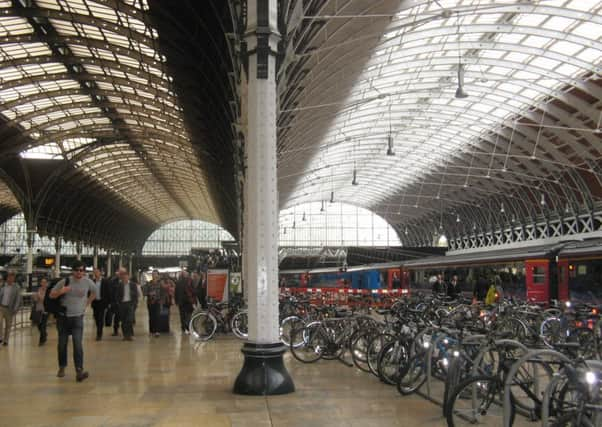Cycling is not as idyllic as it may seem


While it might seem idyllic to cycle in little-used country lanes, cyclists may find there are two principal dangers.
Firstly, the ever-increasing size and speed of cars, lorries and farm machinery results in the breaking up of the edge of the road surface, as well as worsening potholes in the main part of the carriageway, which can be a serious danger to a cyclist, especially when meeting another vehicle.
Advertisement
Hide AdAdvertisement
Hide AdThe result of falling off can be not only personal injury from the fall, but worse if the fall is in the path of the oncoming vehicle.
Secondly, there is the lack of understanding of the needs of cyclists on the part of many drivers. In the past there was a natural progression for young people from pedestrian to cyclist, to motorcyclist, to car. Consequently, when they began to drive cars they were acutely aware of what they needed to do to keep cyclists safe.
Unfortunately, young people nowadays often start with a small car and never see the road from any other perspective, except that of pedestrian. The omission of experience as a cyclist is regrettable.
In cities, many commuters have taken to keeping a bike at their arrival station and using it to cycle to work, returning at the end of their working day. This is particularly noticeable in London, which is aggravated by the cost of using the underground and buses.
Advertisement
Hide AdAdvertisement
Hide AdWhen I started work, a short journey on the underground was two (old) pence, less than one new penny. When people talk of overcrowding on the underground now, they do not know what it was like then.
Despite congestion charging, the traffic in London is still such that cyclists can weave to and fro between other vehicles, often creating friction between them and drivers. Gone are the days when road users treated each other with courtesy and consideration.
A similar lack of courtesy and consideration is demonstrated by some young cyclists who do not seem to understand the rules governing when they may ride on the pavement. They think that they can do so wherever and whenever they please, but this is not so.
Cyclists may ride on the pavement only where there are notices indicating shared use, and there is a general rule that pedestrians have priority at all times. Try telling that to some of the young riders.
Advertisement
Hide AdAdvertisement
Hide AdSome cyclists are fully aware of the rules of the road and have excellent lights, but a motorist in a rural area described her shock at being about to pull out of a side road in the dark when a cyclist, wearing dark clothing and without any lights, appeared in the gloaming at the crucial moment. If she had collided with him, whose fault would it have been?
Apparently the police, who previously were able to enforce even minor aspects of the law and generally encouraged good manners on the road, are now so deprived of resources that they may leave it to insurance companies to concentrate motorists’ minds on their driving standards.
Unfortunately, this method does not apply to cyclists, who still have no need of licences or insurance, and some seem to think there are no rules that apply to them.
John Wylde is the author of Integrated Transport – a Will-o’-the-wisp? £14.95, post paid and signed. Also Experiments in Public Transport Operation, at £11.95. Order at www.john-wylde.co.uk or from Grieves in Berwick.